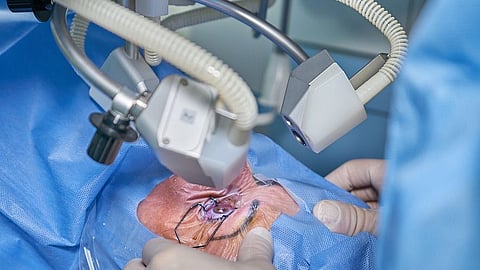“The risk of the procedure itself used to require general anesthesia with paralysis and inpatient admission. Over time, ophthalmologists improved their technique so it [cataract surgery] is much safer and can be done on an outpatient basis,” said Chen. “Often the patient just needs a topical anesthetic such as numbing drops in the eyeball, and, at UCSF anyway, a little fentanyl and midazolam, which are agents a sedation nurse can administer safely.”
A Question of Resources
The study found that, for cataract surgery, 90% of U.S. Medicare patients have an anesthesia provider at the bedside compared to a range of <1% to 70% at bedside for other low-risk elective procedures. In contrast, fewer cataract surgery patients experienced systemic complications within seven days (7.7%) than patients undergoing other low-risk procedures (range, 13% to 52%).
Approximately 6% of ophthalmologists never used anesthesia providers, 77% always used anesthesia providers, and 17% used them for only a subset of patients. Patients of those ophthalmologists who never used anesthesia providers had a 7.4% rate of systemic complications.
There is no specific guidance from professional associations on whether to include an anesthesia expert during cataract surgery, but other countries do not routinely use them, to no ill effect, Chen noted.
With U.S. anesthesiologists being asked to staff an increasing number of non-OR procedures, such as endoscopic or interventional radiology procedures where patients tend to be much sicker and the procedure potentially more invasive, there often aren’t enough of these specialists go around, Chen said.


